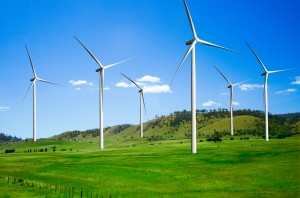Clean Energy Canada | Landmark International Energy Agency report sends clear signal: Canada’s clean energy pivot must start now
May 18, 2021

VICTORIA—Clean Energy Canada executive director Merran Smith made the following statement in response to the International Energy Agency’s new report, Net Zero by 2050:
“The International Energy Agency’s landmark report is clear: for the world to reach net zero by 2050, global oil demand must have already peaked and gas demand will peak before 2030. In other words, growing Canada’s oil and gas sector is inconsistent with a net-zero 2050.
“Canada must prepare for a future where oil is no longer our largest export.
“The good news is that we have what it takes to prosper in a net-zero world. As the IEA notes, we already have all the technologies needed to reach our 2030 climate goals. And with a clean electricity grid, access to U.S., EU, and Asian markets, mature industries, and a skilled workforce, Canada is well-positioned to be a leading exporter of sustainable goods.
“Canada must plan for and invest in industries that will be growing in the coming decades, such as battery manufacturing, zero-emission vehicles, and hydrogen. That said, other parts of our economy also benefit from the transition: in the IEA’s scenario, demand for critical minerals such as copper, cobalt, and manganese—all of which Canada has in abundance—grow seven-fold by 2030 in order to supply the production of clean technologies. The world will be adding the equivalent of almost 20 battery gigafactories a year for the next 10 years to meet the world’s EV needs alone, the scenario concludes.
“In the IEA’s own words, ‘by 2050, the energy world looks completely different.’ Canada has what this different world needs—we need only choose to deliver our best and cleanest solutions.”
KEY FACTS
A number of countries, including Canada, have announced forthcoming legal commitments to reach net-zero emissions by 2050—something that is necessary if the world is going to limit global temperature rise to .
The report is described as “the world’s first comprehensive study of how to transition to a net zero energy system by 2050 while ensuring stable and affordable energy supplies, providing universal energy access, and enabling robust economic growth.” Below are some of its key findings:
FOSSIL FUELS
Under a net zero 2050 scenario, the report indicates the following would occur:
- No new oil and gas exploration and development after 2021.
- Global oil demand never returns to its 2019 peak, and will decline 75% from the 90 million barrels a day at present to about 24 million barrels a day by 2050.
- Fossil fuels fall from around 80% of total energy supply to around 20% by 2050. Remaining fossil fuels will be used in plastics, captured and stored, or in sectors with few clean options.
- Natural gas demand declines 55% and coal demand declines 90%.
- Liquified natural gas trade increases from 420 billion cubic metres in 2020 over the next five years but then falls to around 160 billion cubic metres in 2050 (North America accounts for a tiny share post-2040). Many of the LNG liquefaction facilities currently under construction or at the planning stage will not be needed.
RENEWABLES AND CLEAN TECHNOLOGY
- In this scenario, clean energy investments would create 30 million new jobs by 2030, offsetting the five million jobs that would be lost in fossil fuels.
- Renewables will need to scale up massively to replace fossil fuels, supplying two-thirds of total energy needs, and nearly 90% of electricity generation in 2050
- All the technologies needed to meet 2030 milestones already exist, including wind and solar, energy efficiency, and electrification.
- 2050 requires a ramp up in electrification, carbon capture utilization and storage, and hydrogen. It also depends on technologies currently under development, such as advanced batteries, hydrogen electrolysers, and direct air capture and storage.
- The scenario imagines that “each month from 2030, the world equips 10 new and existing heavy industry plants with carbon capture utilization and storage, adds three new hydrogen-based industrial plants and adds 2 gigawatts of electrolyser capacity at industrial sites.”
TRANSPORTATION
- Under the 2050 scenario, no new gas-powered light-duty vehicles (like passenger cars and SUVs) are sold after 2035.
- In 2030, 60% of light-duty vehicle sales are electric (up from 5% today), and 100% are by 2035.
- Battery electric vehicles dominate, with small shares of plug-in hybrid electric vehicles and fuel-cell electric vehicles.
- EVs account for 75% of light-duty vehicle sales in richer countries in 2030, and 50% of sales in developing and emerging countries.
- In 2035, 50% of heavy-duty truck sales are electric.